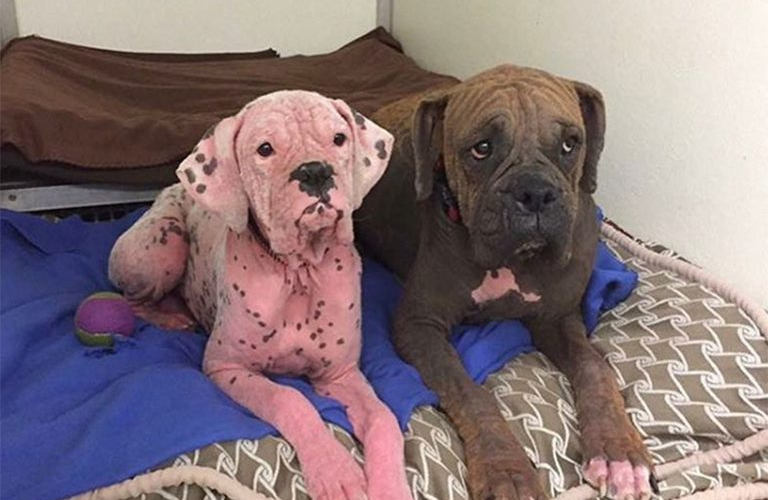Canine dermatitis is not a life-threatening condition compared to other diseases, but it can have significant health consequences and cause substantial damage to the dog’s appearance.
Dermatitis in dogs greatly affects both the animal’s daily life and the human living environment. To prevent your dog from contracting dermatitis, it is essential to maintain proper hygiene. Additionally, it is crucial to understand the causes and treatment methods for this condition.
Causes of Canine Dermatitis
Canine dermatitis is characterized by bacterial infection and pus inflammation on the dog’s skin. The disease originates from various bacteria and parasites such as Sacroptes, Demodex canis, Otodectes cynotis, which reside deep within the dog’s skin. These parasites feed on nutrients, causing uncomfortable itching, and release toxins that lead to allergies in dogs. External parasites like fleas, scabies, ticks, and lice can also cause dermatitis. Moreover, dogs can develop dermatitis due to allergies to dust, fur, medication, or soap, as well as infections from wounds. In some cases, it can also be a hereditary condition.

Canine dermatitis has a detrimental effect on the charming and adorable appearance of many dogs.
Transmission of Canine Dermatitis
If a mother dog has dermatitis, it can be transmitted to her puppies during the nursing stage. Healthy dogs can also contract dermatitis by frequently coming into contact with infected dogs. Dogs with dermatitis can spread the disease through their living environment, including their bedding area and play areas.
Symptoms of Canine Dermatitis
Typically, canine dermatitis affects the head, paws, around the eyes, face, and anus. Dogs with dermatitis exhibit symptoms such as itching, scratching, biting, and damage to these areas. Initially, the inflammation is localized to a small area. Without timely treatment, it can develop into generalized inflammation with a foul odor. Dogs may experience hair loss, redness, thickening of the skin, and dry scales. In severe cases, the condition can lead to yellow discharge and white pus due to secondary bacterial infections, commonly caused by Staphylococcus bacteria.
Canine dermatitis can be visually detected.
Treatment of Canine Dermatitis
To effectively treat canine dermatitis, it is crucial to identify the underlying cause of the disease in the dog.
Inspect the fur thoroughly to identify any hidden parasites such as mites, fleas, or lice. Eliminate these blood-sucking parasites from the dog’s body.
If no external parasites are found but the dog’s skin still appears rough, shave the infected area completely. Then, use a cotton ball soaked in antiseptic solution (e.g., iodine, alcohol, or hydrogen peroxide) to clean the pus.
Pay attention to clean each small infected area individually. Avoid applying antiseptic solution to the entire affected area, as it may spread the pus further. The dog’s skin can become hot, burnt, or poisoned by the antiseptic.
You can purchase veterinary drugs such as 0.1% Vimectin or 0.1% Bivermectin from a pet pharmacy. Administer the medication to the dog as per the instructions provided.

Note: Be cautious when using Bivermectin on dog breeds sensitive to the medication, such as Collies, Australian Sheepdogs, Bobtails, Shetland Sheepdogs, and long-haired Whippets. These breeds should not be administered Bivermectin.
By following these effective treatment methods, you cansuccessfully treat canine dermatitis and improve your dog’s overall health and well-being. Remember to consult with a veterinarian for a proper diagnosis and guidance on the most suitable treatment options for your dog’s specific condition. With proper care and treatment, you can help your furry companion recover from dermatitis and restore their adorable appearance.

